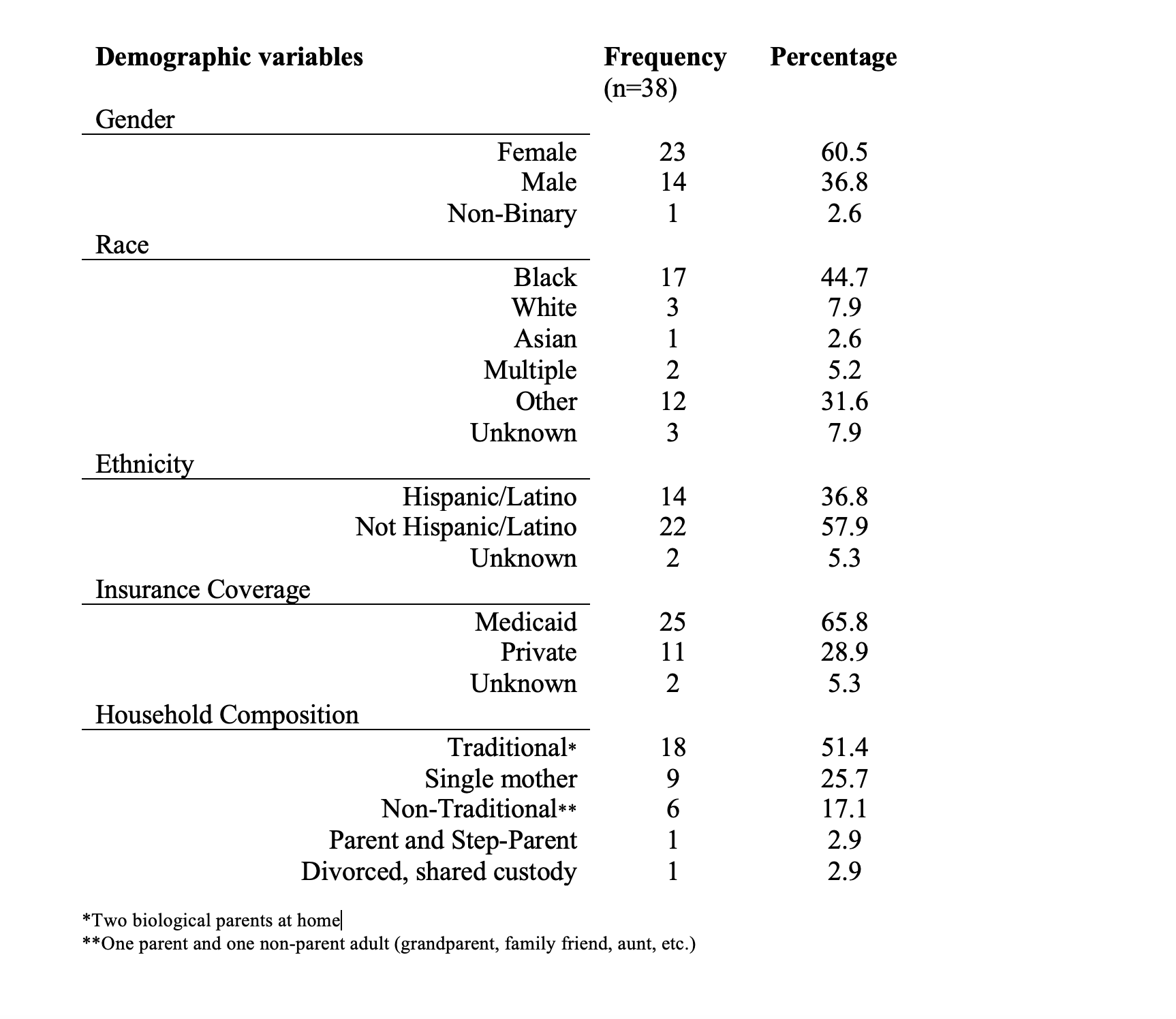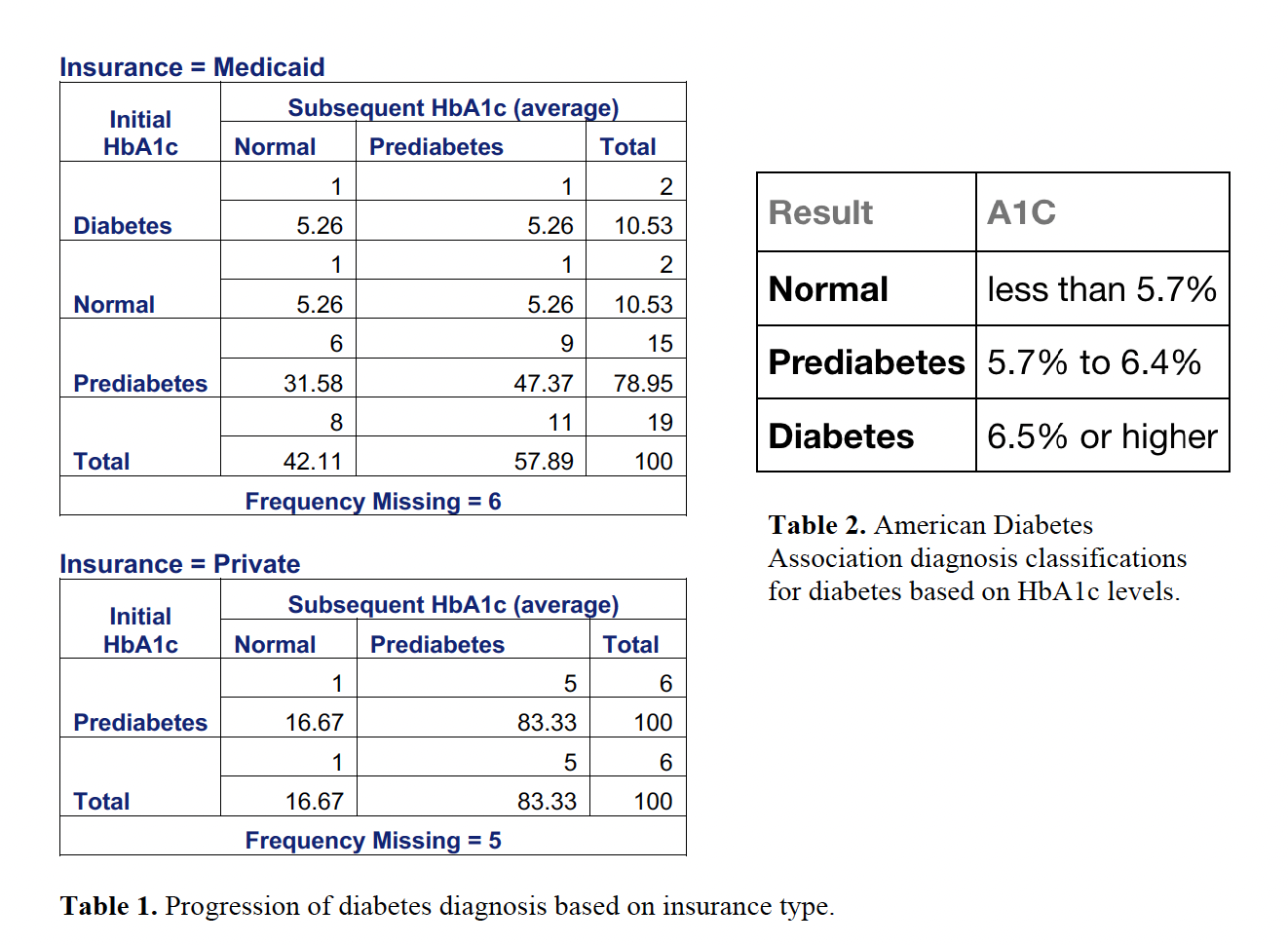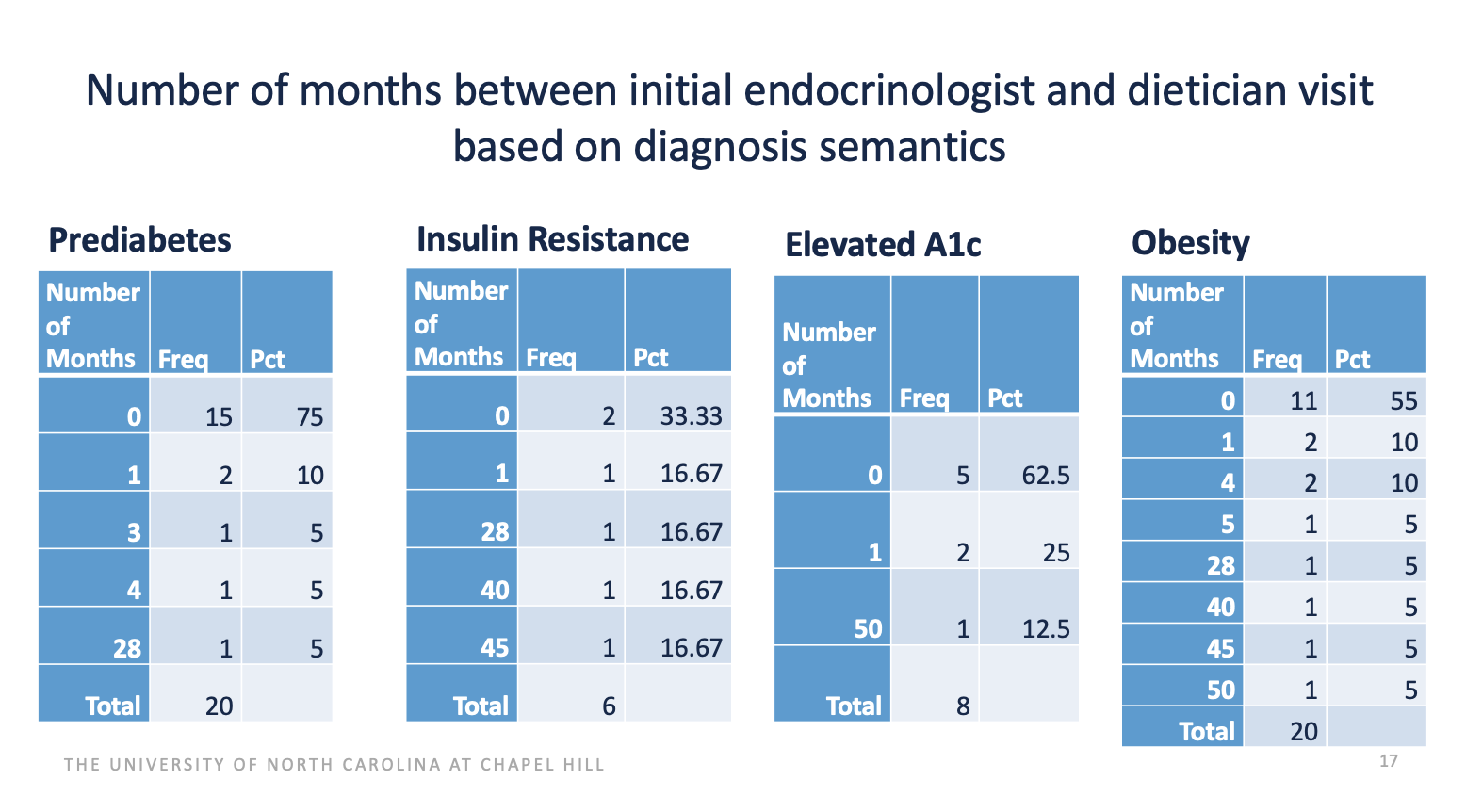Endocrinology: Type 2 Diabetes (T2 DM)
Endocrinology 1
179 - Analysis of Nutrition and Dietary Education for Children with Prediabetes
Publication Number: 179.213
.jpg)
Rhea Jain, BSPH (she/her/hers)
Medical Student
University of North Carolina at Chapel Hill School of Medicine
Apex, North Carolina, United States
Presenting Author(s)
Background:
There is no standard of care for how to manage prediabetes in pediatric patients to prevent it from progressing to Type 2 diabetes. Medical nutrition therapy has proven successful for general diabetes management. No previous studies have analyzed pediatric prediabetic patient compliance with dietician visits or how nutrition therapy affects pediatric diabetes outcomes.
Objective:
Aim 1: To evaluate how pediatric prediabetic patient demographics (age, gender, race/ethnicity, insurance, household composition) correlate to compliance with recommended dietician visits and likelihood of progressing to Type 2 diabetes
Aim 2: To determine if virtual versus in-person visits with the endocrinologist and dietician have an impact on diabetes outcomes
Aim 3: To determine if diagnosis semantics (prediabetic versus hyperglycemic versus insulin resistant) have an effect on patient compliance with recommended dietician visits.
Design/Methods:
This was a retrospective chart review of pediatric patients from January-June 2021 who were diagnosed with prediabetes and subsequently consulted with the diabetes nutrition educator at the University of North Carolina Pediatric Endocrinology Clinic in Chapel Hill, NC.
Results:
The data show that there does not exist a relationship between how quickly a prediabetic pediatric patient will follow up with their dietician and either their household composition or insurance type. We found higher rates of improved HbA1c levels among patients with Medicaid (versus private insurance) and in-person dietician visits (versus virtual). Finally, we found that using the term “prediabetes” in a patient’s diagnosis was associated with quicker follow-up dietician visits.
Conclusion(s):
Nutrition education is effective in improving blood sugar levels, and preventing the progression to T2DM, in pediatric prediabetic patients. There are multiple barriers to complying with dietician referrals including insurance type and in-person versus virtual visits. The terminology that doctors use when discussing their diagnoses is also an important factor in assessing treatment compliance. In the future, we hope to expand our sample size to all patients seen at UNC Pediatric Endocrinology in 2021. We also hope to explore the role of family history of diabetes, county of residence, and education levels on our outcome variables.


